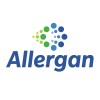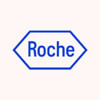
Neovascular Age Related Macular Degeneration (AMD), Periocular Corticosteroids, and Photodynamic...
Choroidal NeovascularizationAge-Related Macular DegenerationRandomized controlled clinical trial of periocular corticosteroids as adjunctive therapy to photodynamic therapy (PDT) for patients with neovascular age-related macular degeneration (AMD). Patients undergoing PDT are randomized to either a periocular corticosteroid injection with 40 mg of triamcinolone acetonide or observation just prior to PDT. Patients are followed for 6 months. Primary outcome is leakage from choroidal neovascularization (CNV) at 3 months on fluorescein angiography.

A Dose Escalation Trial of an Intravitreal Injection of Sirna-027 in Patients With Subfoveal Choroidal...
Age-Related Macular DegenerationChoroidal NeovascularizationThe purpose of this study will be to assess the safety and tolerability and dose-limiting toxicity of a single intravitreal injection of Sirna-027 (AGN211745) and to assess the anatomical changes in the retina, changes in CNV, and changes in visual acuity. Escalation to the next dose cohort will be completed following minimum of 2 weeks follow-up. Patients will be monitored intensively for three months, and then followed-up for safety up to 24 months post-injection.

SUSTAIN - Study of Ranibizumab in Patients With Subfoveal Choroidal Neovascularization Secondary...
Age Related Macular DegenerationChoroidal NeovascularizationRanibizumab is a humanised recombinant monoclonal antibody fragment targeted against human vascular endothelial growth factor A. This study will assess the safety and efficacy of ranibizumab administered on an as-needed dosing regimen in patients with subfoveal choroidal neovascularization (CNV) secondary to age-related macular degeneration (AMD).

Time Course of Activity Signs at SD-OCT High Frequency Intravitreal Ranibizumab Treatment in CNV...
Choroidal NeovascularizationAge Related Macular DegenerationThe purpose of the study is to detect persisting or early new activity of choroidal neovascularization (CNV) due to age related macular degeneration (AMD) during the first 12 months following the first ranibizumab dose at baseline as assessed by weekly high resolution optical coherence tomography (OCT). Detection of persisting or new signs of CNV activity at OCT triggers further ranibizumab treatments considering that any ranibizumab injections can maximally be applied as often as 2-weekly.

Time Efficiency Comparison of Two IntraVitreal Injection Techniques
Neovascular Age-related Macular DegenerationDiabetic Macular Edema3 moreProspective, single-center, randomized, clinical trial (RCT) comparing the time efficiency and safety of a single-use intravitreal injection (IVI) guide versus a traditional technique using a dual blade speculum among patients undergoing IVI for various indications.

Study to Evaluate Faricimab (RO6867461; RG7716) for Extended Durability in the Treatment of Neovascular...
NeovascularizationChoroidal2 moreThis was a Phase II, multicenter, randomized, active comparator-controlled, 52-week study to investigate the efficacy, safety and pharmacokinetics of faricimab (RO6867461; RG7716) administered with extended dosing regimens in treatment-naive participants with neovascular age related macular degeneration (nAMD). Only one eye was chosen as the study eye.

Comparison of Ranibizumab Monotherapy and Ranibizumab Combination Therapies in Recurrent or Persistent...
Age-Related Macular DegenerationNeovascularization1 moreAge-related macular degeneration (AMD) is by far the most common disorder in the group of irreversible causes of visual disability. AMD leads to dysfunction and loss of photoreceptors in the central retina. Neovascular AMD (nAMD) affects visual function early in the disease process and severely compromises the highly developed functions of the macula, such as perception of details, central fixation, color vision, and reading ability. AMD-related visual impairment is associated with a loss of autonomy and quality of life. Current therapeutic approaches target vascular endothelial growth factor (VEGF), which has been identified as a main cytokine in the pathogenesis of nAMD. Ranibizumab, the fab-fragment of an antibody targeting VEGF is approved for the treatment of nAMD applied intravitreally in monthly intervals until the disease activity is stopped. However, a significant proportion of patients with nAMD suffer from persistent or recurring disease with the need of continuous anti-VEGF therapy over months and years, often leading to irreversible changes in the photoreceptor layer and the pigment epithelium. Recent studies regarding the treatment of nAMD utilized different forms of therapies, combining photodynamic therapy with verteporfin (PDT) and ranibizumab, as well as therapeutic regimen containing steroids. Even though these studies did not provide evidence that combination therapies are superior to ranibizumab monotherapy, studies were only conducted with patients with previously untreated nAMD. Therefore, currently there is no alternative therapeutic approach for patients with recurrent or persistent form of nAMD after multiple treatments with ranibizumab monotherapy. The purpose of this study is to assess the treatment effect of reduced fluence PDT and intravitreal ranibizumab versus intravitreal dexamethasone and ranibizumab versus intravitreal ranibizumab monotherapy in patients with persistent or recurrent choroidal neovascularization (CNV) due to AMD. The investigators hypothesis is that these findings will offer new insights in the management of persistent or recurrent CNV secondary to AMD.

Intravitreal Adalimumab in Patients With Choroidal Neovascularization Secondary to Age-related Macular...
Age-Related Macular DegenerationChoroidal NeovascularizationAdalimumab is a humanized recombinant monoclonal antibody fragment targeted against tumor necrosis factor. This study will assess the safety and efficacy of intravitreal adalimumab administered in patients with choroidal neovascularization secondary to age-related macular degeneration non-responders to the conventional treatment with intravitreal ranibizumab.

Efficacy/Safety of Verteporfin Photodynamic Therapy and Ranibizumab Compared With Ranibizumab in...
Macular DegenerationChoroidal NeovascularizationThis study evaluated the effect of combination therapy with verteporfin photodynamic therapy and ranibizumab on visual acuity and anatomic outcomes compared to ranibizumab monotherapy and the durability of response observed in patients with choroidal neovascularization secondary to age-related macular degeneration.

Resveratrol for Exudative Age-Related Macular Degeneration
AMDAge-related Macular Degeneration1 moreThis is an interventional, prospective, randomized, comparative monocentric study aiming to evaluate the safety and efficacy of Resveratrol to reduce the progression of exudative Age-Related Macular Degeneration.
